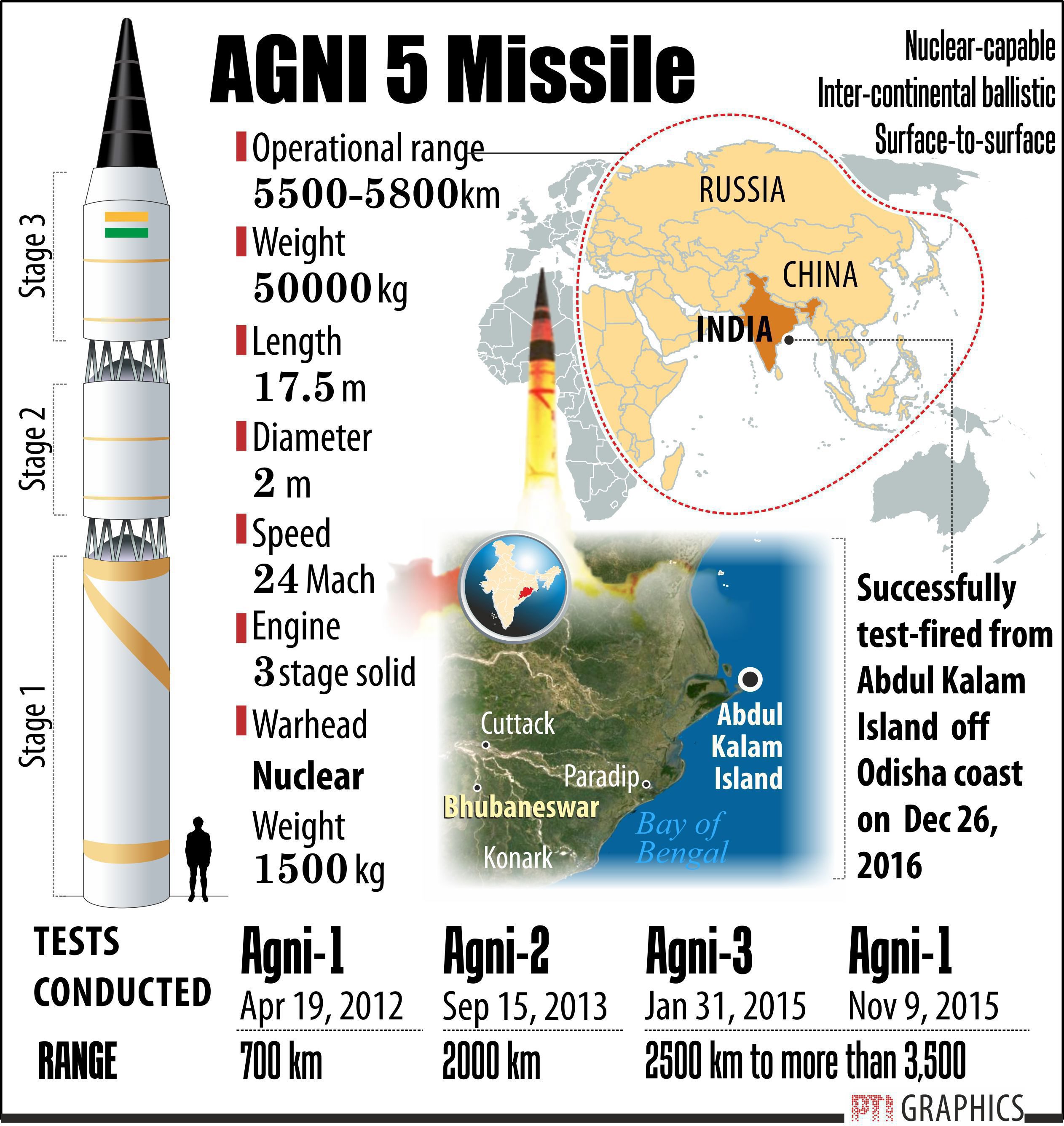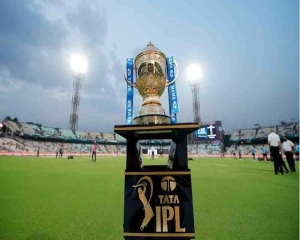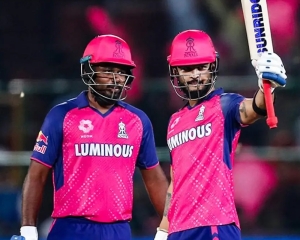With the successful trial of Agni-V off the Odisha coast on Monday, India has developed capability to hit targets in mainland China as the missile can cover more than 5,000 km. This intercontinental ballistic missile (ICBM) can carry one ton of nuclear and conventional war head and has many new features. These include multiple independent re-entry vehicles (MIRV) that could enable the missile to hit a number of targets in one go.
This was the fourth test of Agni-V and subsequent user trials over the next few months will pave the way for its induction into the Strategic Forces Command (SFC), which is responsible for India’s nuclear arsenal.
Once Agni-V is inducted into service, most probably after three more user trials, India will join the select league of nations, having ICBMs, which have the capability of hitting targets at more than 5,000 km. The other nations in the group are the US, the UK, France, Russia and China.
Explaining the significance of the latest test-fire of the surface-to-surface missile from a mobile road launcher at Integrated Test Range (ITR), Abdul Kalam Island at 11.5 am, sources said Agni-V is an improvement over the other missiles in the series namely Agni-1 (700 km range), Agni-II (2,000 km) and Agni-III and IV with a range of 3,500 km.
Unlike its predecessors, Agni-V is a three-stage missile having two-stage launch, giving it more thrust to travel longer distance. It was partly due to use of carbon composite material in manufacturing stage two and three of missile. Since carbon is lighter than metal, the Defence Research and Development Organisation (DRDO) scientists were able to add more features into Agni-V, they said.
One of the most crucial additions to this missile was MIRV-enabling missile to carry several warheads and each one of them capable of hitting a separate or single target as per mission direction. The induction of MIRV into Agni-V powered by solid propellant was a challenging task and the DRDO managed it successfully during the latest test, they said.
About 17-metre long and weighing over 50 ton, the missile blasted from the confines of its canister flawlessly and achieved all targets, said sources, adding the missile can reconfigured to hit targets at more than 5,500 km if need be.
It was the fourth developmental and second canisterised trial of the missile, integrated with a sophisticated mobile launcher in its deliverable configuration that enables launch of the missile within a very short preparation time as compared to an open launch, they said. Moreover, the missile is more reliable, has longer shelf life, needs less maintenance and has enhanced mobility.
The full range test flight of the missile further boosted the indigenous missile capabilities and deterrence level of the country, officials said. All the radars, tracking systems and range stations tracked and monitored the flight performance and all the mission objectives were successfully met, they said all the four tests conducted so far were successful. The first test of Agni-V was conducted on April 19, 2012, the second was on September 15, 2013 and the third on January 31, 2015 from the same base.
Among other features incorporated into the Agni-V for this test, navigation and guidance, warhead (MIRV) and engine figured prominently. Sources said matching these systems with the missile was a tough task and the scientists managed to reconfigure the missile with these systems without a fault in the test.
New technologies developed indigenously like very high accuracy Ring laser Gyro based
Inertial Navigation System (RINS) and the most modern and accurate Micro Navigation System (MINS) had ensured the missile reached the target point within few metres of accuracy, they said.
The high speed on board computer and fault tolerant software along with robust and reliable bus guided the missile. The missile is so programmed that after reaching peak of its trajectory, it turns towards earth to continue its journey towards the intended target with an increased speed due to the attraction of earth’s gravitational pull and its path precisely directed by the advanced on-board computer and inertial navigation system.
Friction between the atmospheric air and the missile during the re-entry phase raises the temperature to beyond 4,000 degrees Celsius. However, the indigenously designed and developed carbon-carbon composite heat shield continues to burn sacrificially protecting the payload, maintaining the inside temperature below 50 degrees Celsius.
President Pranab Mukherjee and Prime Minister Narendra Modi congratulated the DRDO scientists on the successful test-firing. “Congratulations DRDO for successfully test firing Agni V. It will enhance our strategic and deterrence capabilities,” Mukherjee tweeted.
The Prime Minister credited it to the hard work of DRDO scientists and said, “Successful test firing of Agni-V makes every Indian very proud. It will add tremendous strength to our strategic defence.”
























